Gigabyte debuted a pair of black-clad Intel P67-based
motherboards for the upcoming 'Sandy Bridge' CPU at the Fall 2010 Intel Developer Forum
(IDF) this past week in San Francisco. PCSTATS is happy to
be able to show you a few preview
shots and preliminary specs for these beauties
today.
If you haven't already heard, 'Sandy Bridge' is the code
name for a range of upcoming 2xxx-series Intel Core i7, i5 and i3 processors that feature an
integrated graphics component on the CPU die - a first for Intel.
The processors are due for release in early Q1' 2011, right around
the time of the 2011 Consumer Electronics Show (CES). AMD is also expected to
introduce its take on the integrated graphics CPU around this
time. Intel will launch its processors in tandem with a pair
of Intel 6-series chipsets - the performance oriented Intel
P67 and mainstream Intel H67 core
logic.
New
computer technology is always an exciting event, but upgrading on the
Intel platform is becoming increasingly complicated with the range of chip
sockets now in play (775/1156/1366). Intel's Sandy Bridge processors adds to
that mess by requiring the new socket 1155 H67-based motherboards if the graphics components are
to be utilized. It remains to be seen if certain Intel
P55 boards will also support socket 1155 CPUs... AMD
is facing a similar challenge with its so called APU's (CPU+GPU on die) in
that backwards compatibility cannot be maintained because of
the increased infrastructure demands from packing a GPU onto the
CPU die.
Nevertheless, the GA-P67A-UD7 and GA-P67A-UD5 motherboards shown off
by Gigabyte representatives at IDF 2010 represent the
companies first salvo at competing motherboard makers ASUS and MSI. Gigabyte has
been working diligently to capture
the ever fickle enthusiast computer segment with a mix of overclocking tools, build quality
and power features and thus far the combination is working well. In the
last year alone, Gigabyte boosted its market share by 20% in PCSTATS neck of the
world.
Gigabyte P67 Motherboards Unveiled
Each of the Gigabyte P67 motherboards we're getting a first look at in this preview offer users 24-phase VRM
for more stable overclocking, native SATA 6Gb/s, 3x power USB 3.0 ports,
multiple PCI Express 2.0 x16 slots for nVidia SLI & ATI Crossfire.
There's also a range of specific enthusiast tools and build-quality
choices that tweakers and overclockers will certainly appreciate. Gigabyte is
emphasizing its strengths in manufacturing with component programs like Ultra Durable
3, extra thick copper PCB, power saving
tools like Dynamic Energy Saver 2, physical onboard power/reset/clear CMOS
switches, network teaming, etc.
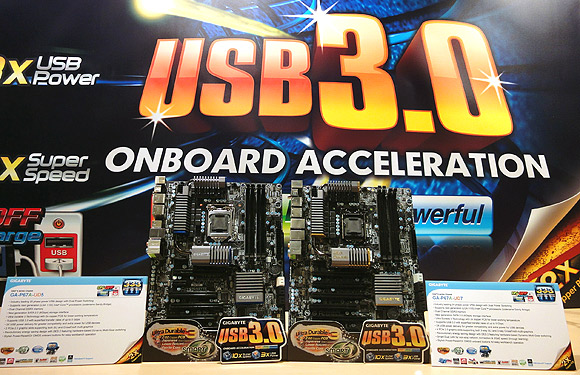
Intel 'Sandy Bridge' - the
CPU+GPU Processor
Most notably, Intel's 2xxx-series Core i7, i5 and i3 Sandy Bridge processors feature
an integrated graphics core on the same physical silicon die as
the CPU. The chips are manufactured on the 32nm process (one notch down
from the current 45nm process) meaning Intel is able to pack more transistors into
less space and reduce power demands and heat output in one fell swoop. Thermal
design power is being pegged at 95W max. In addition to succeeding
Intel's Nehalem/Westmere cores on the desktop, Sandy Bridge will be the first CPU core
from Intel to contain Integrated Graphics. Its monolithic silicon die will
pack in four-cores (higher end models will be hyperthreading enabled), an
onboard memory controller, 6-8MB L3 cache and the aforementioned integrated
graphics processor. The on-CPU IGP is expected to operate at between
650-850MHz (1100-1350MHz in Turbo mode), support DirectX 10.1, SM4.0 and
OpenGL3.1. Beyond that the details are still fuzzy...
Early rumors from the Computex show floor speculated that Sandy Bridge
graphics could essentially be a dual-core version of the Intel GMA HD IGP, though
this remains unconfirmed. What is known is that in order to accommodate the extra
power and data demands of the on-CPU IGP, Sandy
Bridge processors will require a new socket, socket 1155.
Intel H67 motherboards will have the necessary video
connections to output the on-CPU graphics and take advantage of hardware
encoding technologies much like AMD's 890GX chipset. Differences between the
Intel P55 and P67 chipsets are largely focused on behind the scenes architectural
adjustments to accommodate the Sandy Bridge CPU's. In any case, let's take
a quick look at the what Gigabyte has in store for Sandy
Bridge starting with the enthusiast oriented Gigabyte GA-P67-UD7 motherboard, a flagship platform
featuring everything but the kitchen sink!
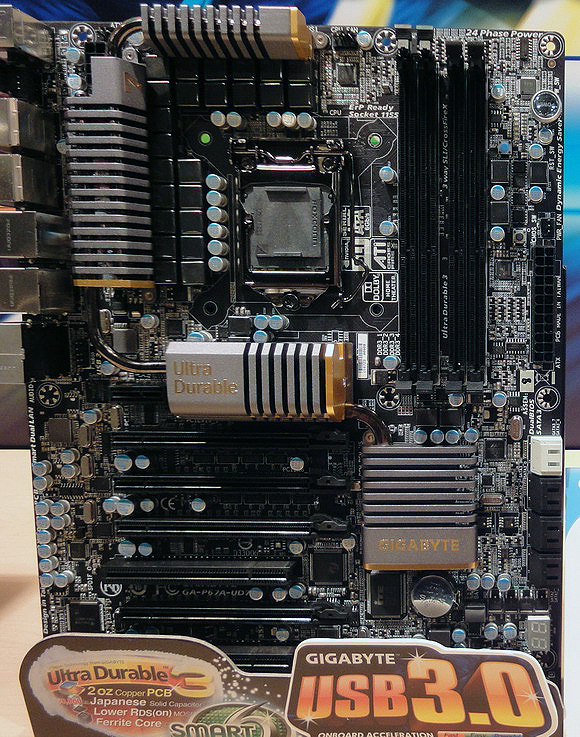
Gigabyte GA-P67A-UD7 Motherboard
Debuts at IDF
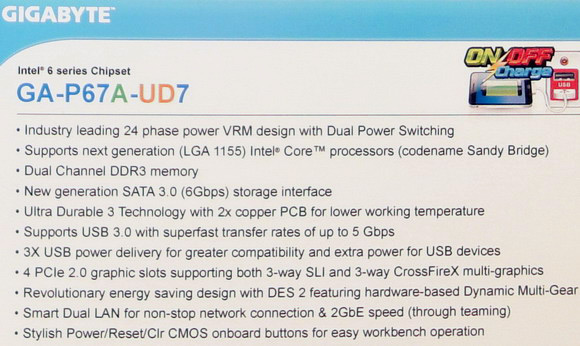
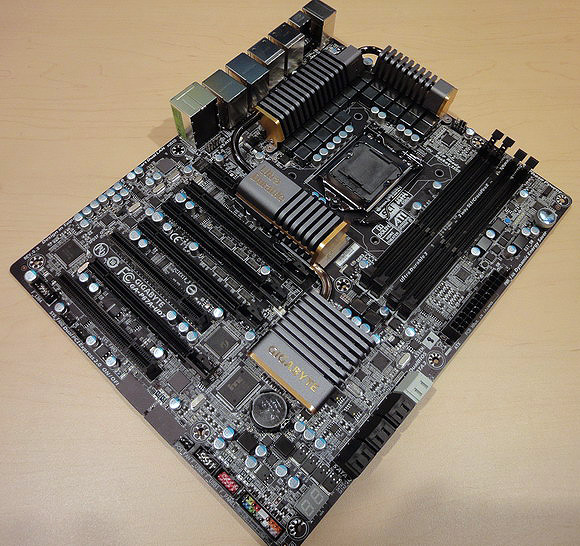
Gigabyte GA-P67A-UD7 motherboard
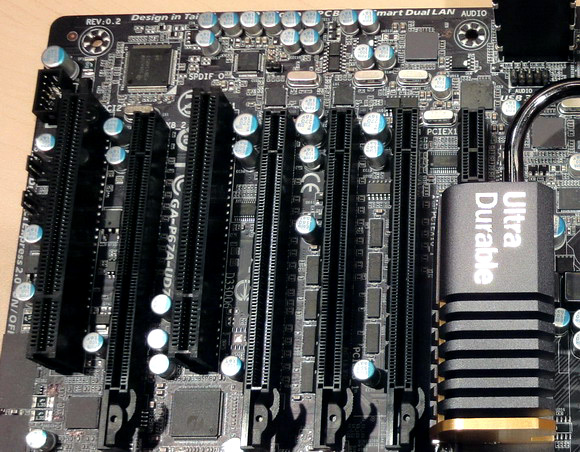
Four
PCI Express 2.0 x16 videocards slots which support 3-way nVidia SLI and ATI
Crossfire.
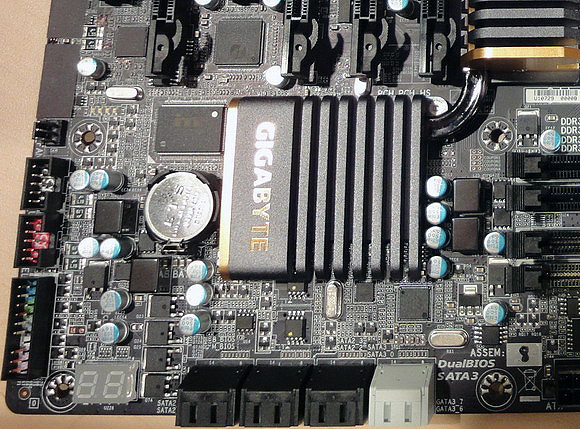
Native
SATA 6gb/s and USB 3.0
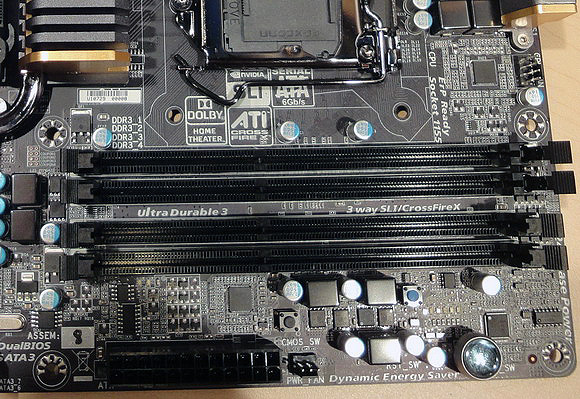
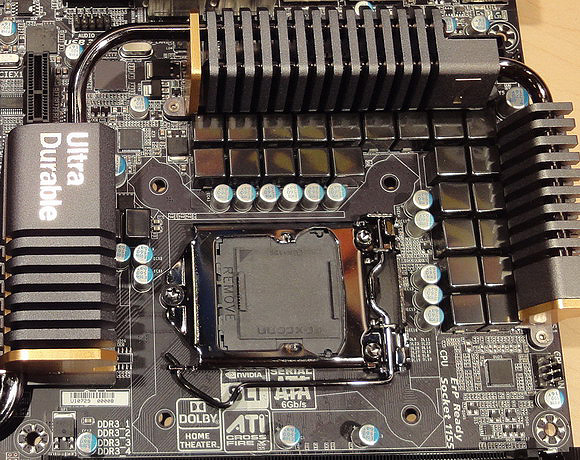
24-phase VRM on the Gigabyte
GA-P67A-UD7 motherboard

Four USB
3.0 slots on the Gigabyte GA-P67A-UD7.
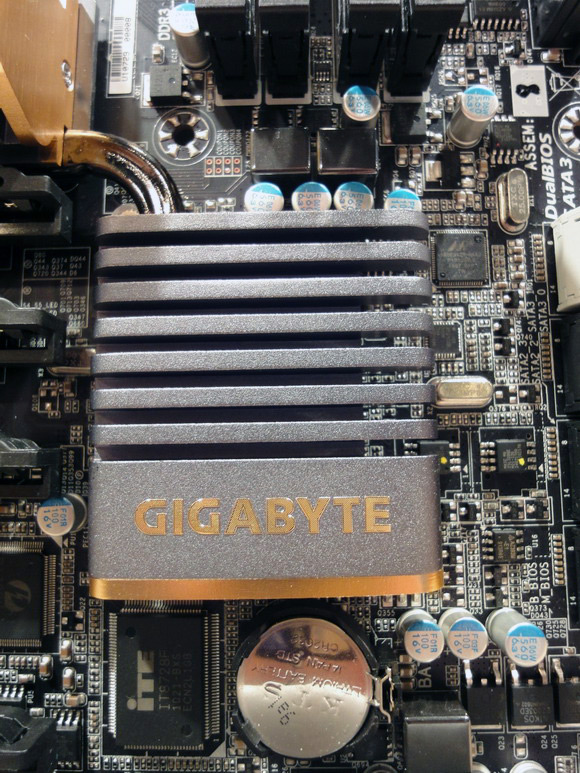
Next up is a first look at the Gigabyte GA-P67A-UD5
motherboard from Fall 2010 IDF....

